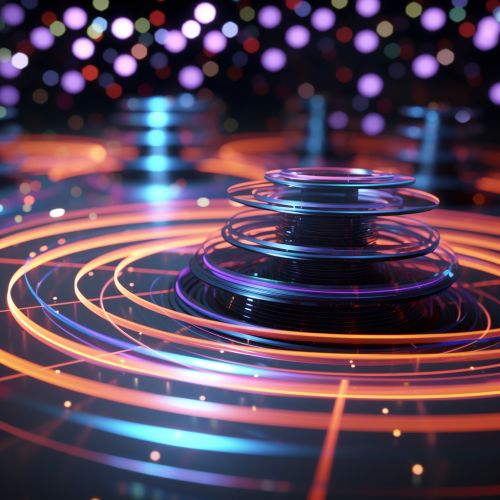Quantum Spin Hall Effect
Introduction
The Quantum Spin Hall Effect (QSHE) is a quantum state of matter that is a close relative of the more familiar quantum Hall effect. It is a topological phase of matter that was theoretically predicted in 2005 and experimentally observed in 2007. The QSHE is characterized by edge states that are immune to backscattering and carry spin-polarized current. This effect is a result of strong spin–orbit interactions and time-reversal symmetry.


Theoretical Background
The QSHE is a consequence of the quantum mechanics of electrons in a two-dimensional system with strong spin–orbit interaction. The spin–orbit interaction couples the spin of the electron (a quantum mechanical property) to its orbital motion. This interaction is particularly strong in heavy elements and in low-dimensional systems. The QSHE is a topological effect, which means that it is robust against small perturbations in the system.
Spin–Orbit Interaction
The spin–orbit interaction is a type of interaction between the spin of a particle and its orbital motion. In the context of the QSHE, the spin–orbit interaction leads to a coupling between the spin of the electron and its momentum, which gives rise to the spin-polarized edge states.
Topological Insulators
The QSHE is a property of a class of materials known as topological insulators. These are materials that are insulating in their interior but have conducting states on their surface or edges. The conducting states are topologically protected, meaning they are robust against small changes in the system.
Experimental Observations
The QSHE was first experimentally observed in 2007 in a two-dimensional mercury telluride quantum well. The observation was made by measuring the conductance of the system as a function of the magnetic field and temperature. The results showed a quantized conductance at zero magnetic field, which is a signature of the QSHE.
Applications
The QSHE has potential applications in spintronics, a field of research that aims to use the spin of electrons for information processing. The spin-polarized edge states of the QSHE could be used to create spin-polarized currents, which could be used in spin-based electronic devices.
